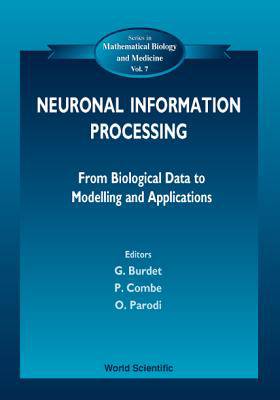
- Afhalen na 1 uur in een winkel met voorraad
- Gratis thuislevering in België vanaf € 30
- Ruim aanbod met 7 miljoen producten
- Afhalen na 1 uur in een winkel met voorraad
- Gratis thuislevering in België vanaf € 30
- Ruim aanbod met 7 miljoen producten
Neuronal Information Processing, from Biological Data to Modelling and Application
€ 108,95
+ 217 punten
Omschrijving
Recent developments in the neurosciences have considerably modified our knowledge of both the operating modes of neurons and information processing in the cortex. Multi-unit recordings have enabled temporal correlations to be detected, within temporal windows of the order of 1ms. Oscillations corresponding to a quasi-periodic spike-giving, synchronized over several visual cortical areas, have been observed in anaesthesized cats and monkeys. Recent studies have also focused on the role played by the dendritic arborization.These developments have led to considerable interest in a coding scheme which relies on precise spatio-temporal patterns from both the theoretical and experimental points of view. This prompts us to look into new models for information processing which will proceed, for example, from a synchronous detection of correlated spike giving, and is particularly robust against noise. Such models could bring about original technical applications for information processing and control.Further developments in this field may be of major importance for our understanding of the basic mechanisms of perception and cognition. They could also lead to new concepts in applications directed towards artificial perception and pattern recognition. Up to now, artificial systems for pattern recognition are far from reaching the standards of human vision. Systems based on a temporal coding by spikes may now be expected to bring about major improvements in this field.This book covers the lectures delivered at a summer school on neuronal information processing. It includes information on all the above-mentioned developments, and also provides the reader with the state-of-the-art in every relevant field, including the neurosciences, physics, mathematics, and information and control theory.
Specificaties
Betrokkenen
- Uitgeverij:
Inhoud
- Aantal bladzijden:
- 220
- Taal:
- Engels
- Reeks:
- Reeksnummer:
- nr. 7
Eigenschappen
- Productcode (EAN):
- 9789810238261
- Verschijningsdatum:
- 2/06/1999
- Uitvoering:
- Hardcover
- Formaat:
- Genaaid
- Afmetingen:
- 159 mm x 225 mm
- Gewicht:
- 453 g

Alleen bij Standaard Boekhandel
+ 217 punten op je klantenkaart van Standaard Boekhandel
Beoordelingen
We publiceren alleen reviews die voldoen aan de voorwaarden voor reviews. Bekijk onze voorwaarden voor reviews.









